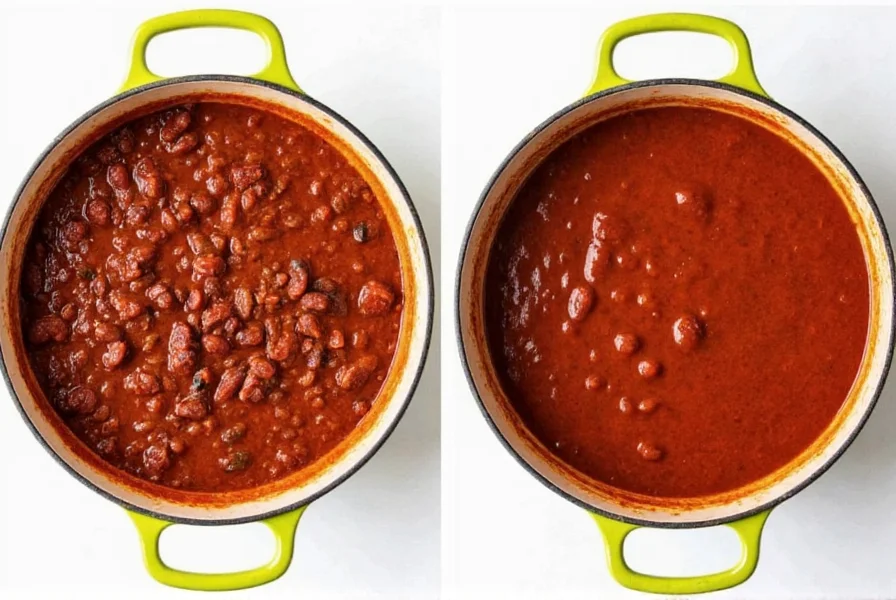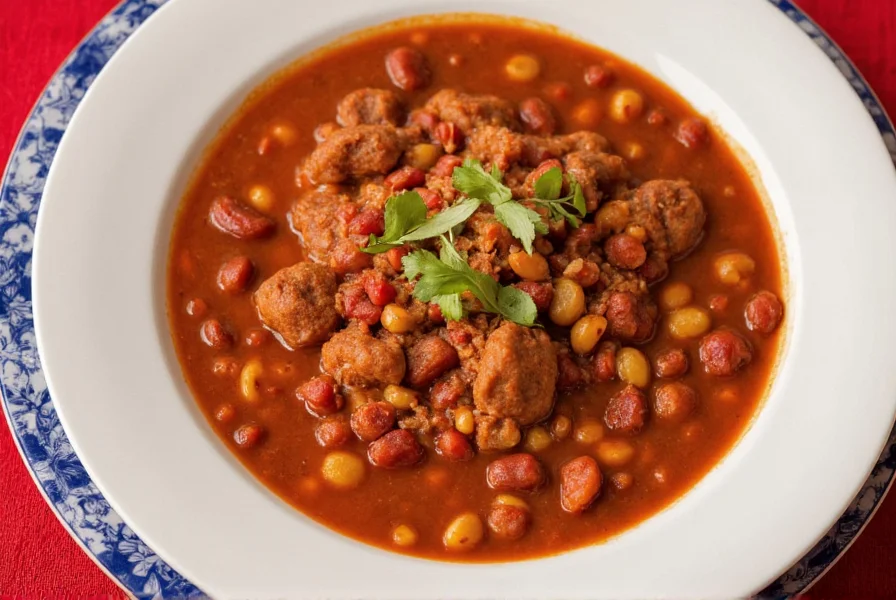The best all-purpose chili recipe combines 1.5 lbs ground beef, 1 diced onion, 3 minced garlic cloves, 28 oz crushed tomatoes, 15 oz kidney beans (drained), 2 tbsp chili powder, 1 tsp cumin, 1 tsp smoked paprika, 1/2 tsp cayenne pepper, and 1 cup beef broth. Simmer for 90 minutes for deep flavor development. This versatile base can be adapted for vegetarian, turkey, or slow cooker variations while maintaining authentic chili character.
Mastering the Art of Homemade Chili: A Culinary Essential
Chili represents one of America's most beloved comfort foods, with regional variations spanning from Texas-style meat-centric recipes to Cincinnati's unique spice blend. Understanding the fundamentals transforms this simple dish into a culinary masterpiece that satisfies both casual weeknight dinners and special game day gatherings.
Essential Ingredients for Authentic Flavor
Creating exceptional chili starts with quality components. The foundation requires:
| Ingredient Category | Key Components | Why It Matters |
|---|---|---|
| Protein Base | Ground beef (80/20), chuck roast, turkey, or plant-based alternatives | Fat content affects richness; lean meats require additional moisture |
| Aromatics | Yellow onion, garlic, poblano peppers | Builds flavor foundation; don't skip the "sweat" step |
| Tomato Component | Crushed tomatoes, tomato paste, or fire-roasted varieties | Acidity balances richness; paste adds concentrated umami |
| Bean Options | Kidney, pinto, black beans, or none for traditional Texas style | Texture contrast; authentic recipes often omit beans |
| Spice Blend | Chili powder, cumin, smoked paprika, oregano, cayenne | Layered heat and complexity; toast whole spices when possible |
Step-by-Step Preparation Guide
Follow this professional technique for restaurant-quality results:
- Brown proteins properly: Sear meat in batches without overcrowding to develop fond (those flavorful browned bits)
- Sweat aromatics: Cook onions and garlic until translucent but not browned (5-7 minutes)
- Bloom spices: Add dry spices to aromatics for 1 minute to release essential oils
- Build layers: Incorporate tomato products, broth, and proteins gradually
- Simmer patiently: Minimum 60-90 minutes uncovered for flavor concentration
- Final seasoning: Adjust salt and acidity (a splash of vinegar) before serving

Variations for Every Preference
Adapt this base recipe to suit dietary needs and regional styles:
Texas-Style Chili Con Carne
Omit beans and tomatoes for pure meat focus. Use 3 lbs cubed chuck roast, 4 dried ancho chilies (rehydrated and blended), and 2 cups beef stock. Simmer 3-4 hours until meat shreds easily. This authentic chili recipe without beans honors Central Texas tradition.
Vegetarian Three-Bean Chili
Substitute 2 cups cooked lentils and 1 diced sweet potato for meat. Use vegetable broth and add 15 oz each of kidney, pinto, and black beans. Include 1 diced bell pepper for texture. This vegetarian chili recipe with beans delivers complete protein and hearty satisfaction.
Slow Cooker Weeknight Version
For busy schedules, combine all ingredients in a 6-quart slow cooker. Cook on low 6-8 hours. Remove lid last hour to thicken. This easy chili recipe for beginners requires minimal attention while developing deep flavors.
Common Mistakes That Ruin Chili
Avoid these pitfalls that compromise even well-intentioned recipes:
- Skipping the sear: Proper browning creates Maillard reaction for complex flavors
- Over-relying on chili powder: Blend multiple spices rather than using pre-mixed blends
- Adding cold liquids: Use room temperature broth to maintain cooking temperature
- Underseasoning: Chili needs more salt than expected; season in layers
- Rushing the simmer: Minimum 60 minutes required for flavor integration

Serving and Storage Recommendations
Maximize enjoyment with these professional tips:
- Cooling technique: Refrigerate uncovered for first hour to prevent condensation
- Flavor development: Chili tastes better the next day as flavors marry
- Freezing method: Portion in 2-cup containers with 1-inch headspace for expansion
- Reheating: Warm gradually on stove with splash of broth to refresh moisture
- Garnish bar: Offer shredded cheese, sour cream, green onions, and lime wedges
Understanding these fundamentals transforms your spicy chili recipe for game day from ordinary to extraordinary. Whether you're preparing a healthy turkey chili recipe or traditional beef version, attention to technique matters more than exotic ingredients. The best chili builds layers of flavor through proper technique rather than overwhelming heat.
How can I make my chili less spicy without losing flavor?
Add acidity rather than sweetness to balance heat. A tablespoon of apple cider vinegar or lime juice brightens flavors while reducing perceived spiciness. Dairy alternatives like coconut milk work for non-dairy diets. Remember that heat develops over time, so adjust seasoning near the end of cooking.
What's the secret to thickening chili without cornstarch?
Simmer uncovered to reduce liquid naturally. Mash some beans against the pot side to release starches. For meat-based versions, remove 1 cup of chili, shred the meat finely, and return to the pot. This technique maintains texture while improving thickness without altering flavor.
Can I make authentic chili in under 30 minutes?
Yes, with strategic shortcuts. Use pre-cooked ground meat, fire-roasted canned tomatoes, and quick-soak beans (boil 5 minutes, rest 1 hour). Bloom spices in oil first, then combine all ingredients and simmer 20 minutes. While not as complex as slow-simmered versions, this quick chili recipe for busy weeknights delivers satisfying results.
Why does my chili taste bland even with plenty of spices?
Spices lose potency when added too early or to cold liquids. Always bloom dry spices in hot oil for 60 seconds before adding other ingredients. Layer seasonings throughout cooking rather than adding all at once. Finish with acid (vinegar or citrus) to brighten flavors. Remember that salt enhances all other flavors—season in stages as you cook.
What's the difference between chili powder and chili seasoning?
Chili powder is primarily ground chilies with minimal additives, while chili seasoning contains additional ingredients like garlic powder, cumin, and salt. For authentic flavor control, combine individual spices: 2 tbsp pure chili powder + 1 tbsp cumin + 1 tsp oregano + 1/2 tsp cayenne. This approach creates a superior homemade chili seasoning blend without fillers.











 浙公网安备
33010002000092号
浙公网安备
33010002000092号 浙B2-20120091-4
浙B2-20120091-4